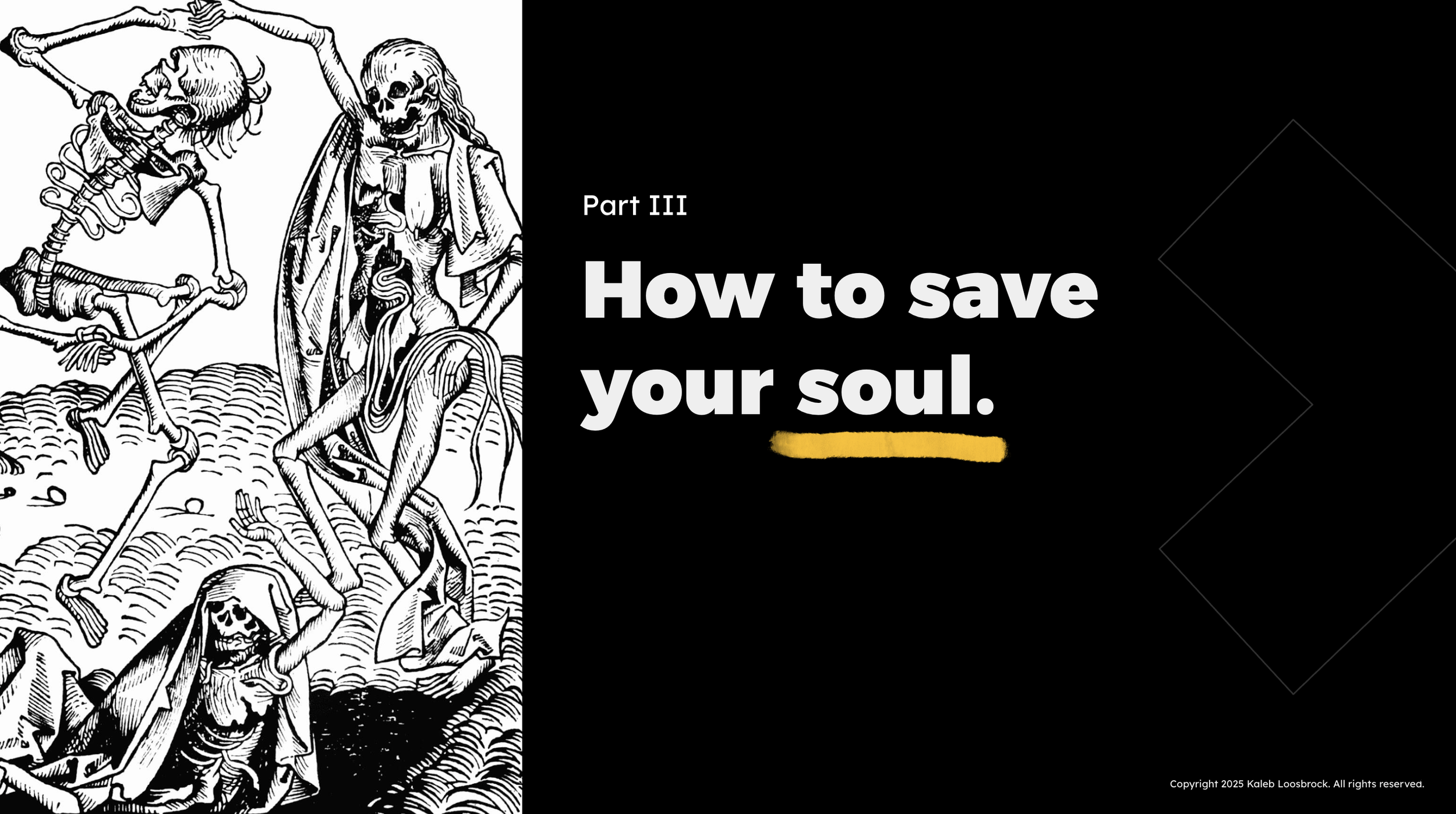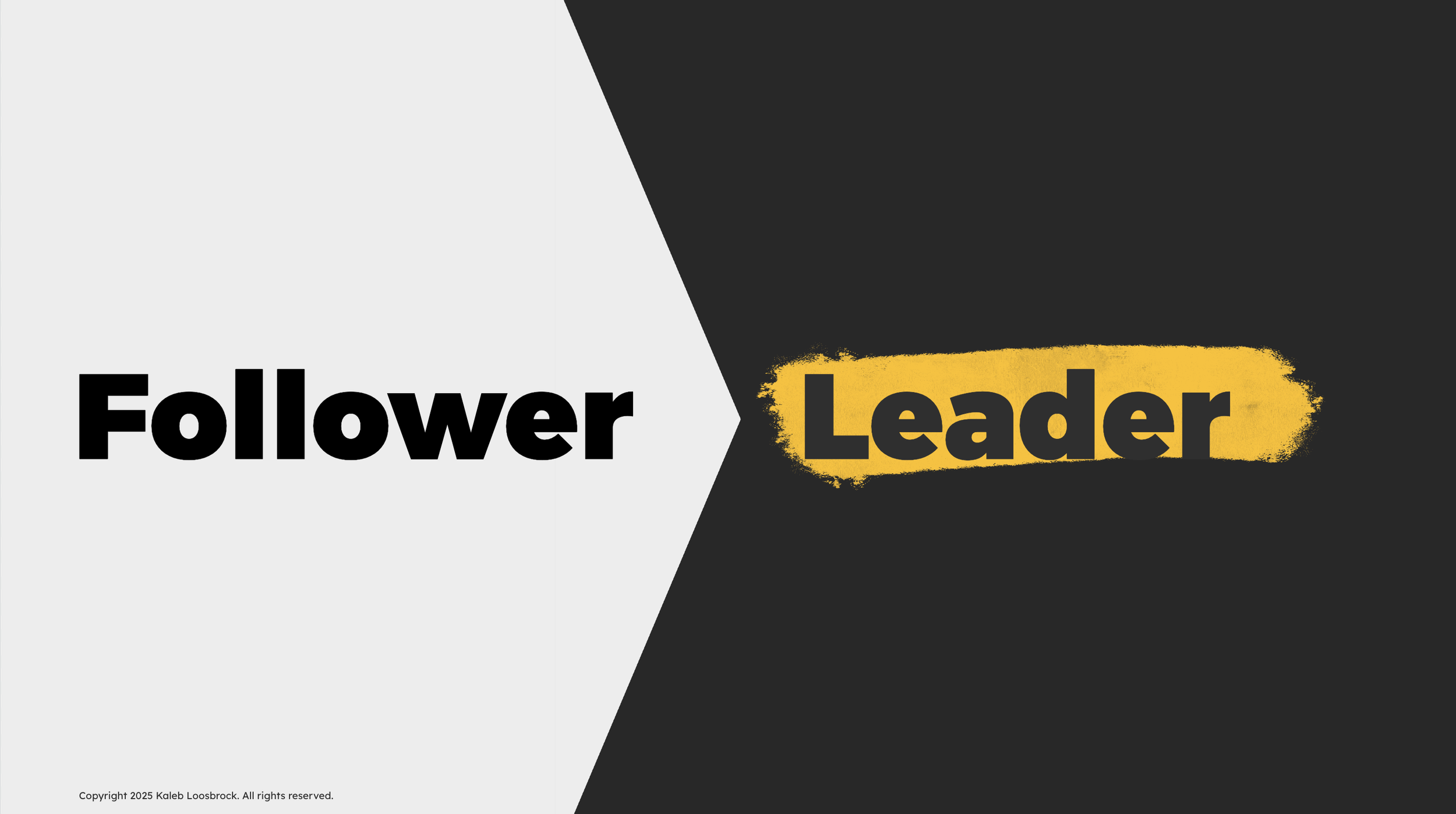A Staff Researcher’s humble guide to harnessing AI's power without losing your mind—or your integrity.
A quick note: The ideas in this article are adapted from a talk I recently gave at the 2025 Learners Research Week conference in San Francisco. For those who prefer to watch, you can find the full recording of the talk below.
The AI-Empowered Researcher: How to dance with the devil and keep your soul
For the longest time, my gut reaction to using Generative AI in my research process was… complicated.
On one hand, the promise was intoxicating: instant summaries, effortless analysis, a world without the tedious parts of our work. On the other hand, the reality was often frustrating. It felt like learning to dance with a powerful, unpredictable partner who had their own ideas about the choreography. Sometimes graceful, other times stepping all over your feet.
Many of us in the UX Research community have felt this tension. We’ve been told from all sides that we must become "AI-First," that it’s our productivity savior…
…yet, the statistics tell a story of hesitation. A recent Figma report revealed that while 85% of UX professionals view AI as essential to the future, a separate study by Maze found that only 37% of researchers are actually incorporating it into their processes. Furthermore, only 21% of researchers are utilizing AI in most of their studies.
So, we understand its importance, but we're not adopting it. Why?
Because we've all been burned, we’ve all pasted a transcript into a chat window, asked for a summary, and gotten back something that was generic, shallow, or just plain wrong. It doesn’t really inspire confidence to try and try again.
Just a couple of months ago, I worked on a concept testing project that was intense. The only way I could meet the deadlines was by utilizing AI to help speed me up in parts of the analysis. So I fed it transcripts, but it was getting seriously confused—conflating and confabulating feedback between concepts and participants. Even after I informed it of its issues. Even despite careful prompting, it still wasn’t getting it right. FRUSTRATING doesn’t even begin to describe it…more like maddening
…AI wasn't a magic button. It was a new, complex tool. And using it effectively was going to be a skill in itself.
After two years of trial and error, of late nights wrestling with prompts and reviewing outputs, I’ve come to a conclusion.
—> The question isn't whether AI is our "Saviour or Satan." The question is whether we are willing to learn the steps to lead the dance with AI.
Because this is a dance we have to lead. If we don’t, we risk being led by AI, and that’s a path to losing the nuance, rigor, and human-centricity that defines our craft.
So, how do we lead? I've distilled my journey into two parts: a practical framework for getting the results you want, and a set of principles for "keeping our soul" in the process.
The Choreography
Better Output Starts with Better Prompts
Here’s the most important thing I’ve learned: the single best way to improve your AI's output is to improve your prompt.
To make my instructions more like a detailed choreography—ensuring that I’m leading AI and not the other way around—I developed a framework I call CRAFTe. It’s a simple acronym to ensure I’m giving my AI partner the detailed choreography it needs to succeed.
It stands for:
Context: Give the AI the entire background. Who are you? What is this project about? What are the goals? I literally give it my research plan.
Role: Tell the AI who to be. "Act as a Principal Researcher with a PhD in HCI." This focuses its output, drawing from a specific domain of knowledge.
Actions: Provide clear, step-by-step instructions. Don't ask it to do ten things at once. Ask it to do thing 1, then thing 2.
Format: If you need the output in a specific format (a table, a list, a certain citation style), tell it explicitly.
Template: If you have a specific template (such as a session summary template), provide the entire document. This is optional, but it helps meet your expectations.
examples: This is the magic key. Show the AI exactly what a perfect output looks like. This has been the single biggest lever for improving the quality of my results.
This might seem like a lot of work upfront, but a well-crafted prompt is an investment. It’s the difference between spending 10 minutes writing a prompt and getting a 90% finished product, versus spending 30 seconds on a prompt and two hours fixing a garbage output.
To illustrate this in practice, I've included a short video of me executing a prompt built with the CRAFTe framework to generate a structured summary from a raw interview transcript.
This framework is the foundation, but seeing a complete, real-world example is the best way to understand its power. I've written up the full, anonymized prompt I used...
You can view the complete prompt template here >
Pssst…Interested in seeing examples and these prompts in action? Sign up for my newsletter!
The Proof
A Case Study in Leading the Dance
On a recent concept testing project, the timeline was brutal. I had to test 6 designs across 20 one-hour interviews and deliver insights in just three weeks. Manually, the analysis alone would have been a 120-hour monster.
By utilizing my AI partner and the CRAFTe framework, which would have taken me over 120 hours to complete manually, I was able to complete the analysis in just 24 working hours.
That’s an 80% reduction in time spent.
But here’s the crucial part: that time wasn’t just "saved." It was reallocated. It was more time I got back to think deeper, to focus on the strategic "so what?" behind the data, to craft a more compelling story for my stakeholders, and actually influence team’s decisions. I wasn't just a synth-and-report machine. I was a partner and strategist. That is the true promise of this dance with AI.
The promise of AI might begin in efficiency, but if utilized correctly, it’s ends in influence. We’re only scratching the surface of what this technology can afford (both positively and negatively).
The Integrity Piece
How to Keep Your Soul
Efficiency is meaningless if we sacrifice our integrity. As we integrate these powerful tools, we must be governed by a set of non-negotiable principles. These are mine.
Always Review. You Own the Outcome. Your reputation is on the line, the AI's is not. Blindly trusting or copy-pasting an AI's output is not leadership; it's abdication. We must be the final arbiters of truth and accuracy. Full stop.
Lead with Creative Integrity. We need to be mindful of ownership when working with AI. Before uploading proprietary documents or sensitive materials, ensure you are using a secure, private instance of an AI model with clear data protection agreements. When in doubt, consult your legal team. Our goal is to use AI to innovate incrementally, not to infringe on the IP of others or our own organizations.
Choreograph for Everybody. AI models learn from datasets that reflect existing societal biases. It is our responsibility to actively mitigate this. Instead of asking for "user feedback," prompt the AI to summarize feedback while "paying close attention to differing experiences across age groups and accessibility needs." We must design for equity in our prompts, not just our products.
Keep the Dance Floor Sacred. Our participants' trust is our most valuable currency. Never feed Personally Identifiable Information (PII) into a public AI model. Anonymize your data before your AI partner even sees it. This is our core ethical duty.
Disclose Your Partner. Just as we document our methods, we must be transparent about our use of AI. I've started adding a simple sentence to my reports:
"The analysis was conducted using a combination of AI-powered data extraction and human evaluation & interpretation."
It’s honest, and it builds trust.
It’s Our Dance to Lead
The shift is here. We are moving from being followers of a manual process to leaders of an AI-assisted workflow.
If we’re to keep the soul and integrity of our our work and profession, we need to remain firmly grounded in our human-centered principles while evolving to know how and when to incorporate our AI partners strategically and ethically.
But it’s not enough to merely learn the dance. As researchers, I believe that we must and can lead the dance with AI.
We set the choreography (the strategy).
We guide the steps (the prompts).
And we interpret the final performance (the insights).
This is how we harness the immense power of this technology without losing the rigor, the empathy, and the integrity—the very soul—of our craft.
The dance can be complex, but it’s ours to lead. Let’s get to it.
P.S — The conversations and the curious researchers that I’ve met since my presentation have inspired me. It's clear we need a dedicated space to go deeper. I'm currently building a free AIxUXR community for us to share prompts, ask for help, and navigate this shift together.
If you found this helpful, subscribe for more practical guides on navigating the intersection of AI and research. I'll be sharing more frameworks, case studies, and hard-won lessons in the coming weeks.







